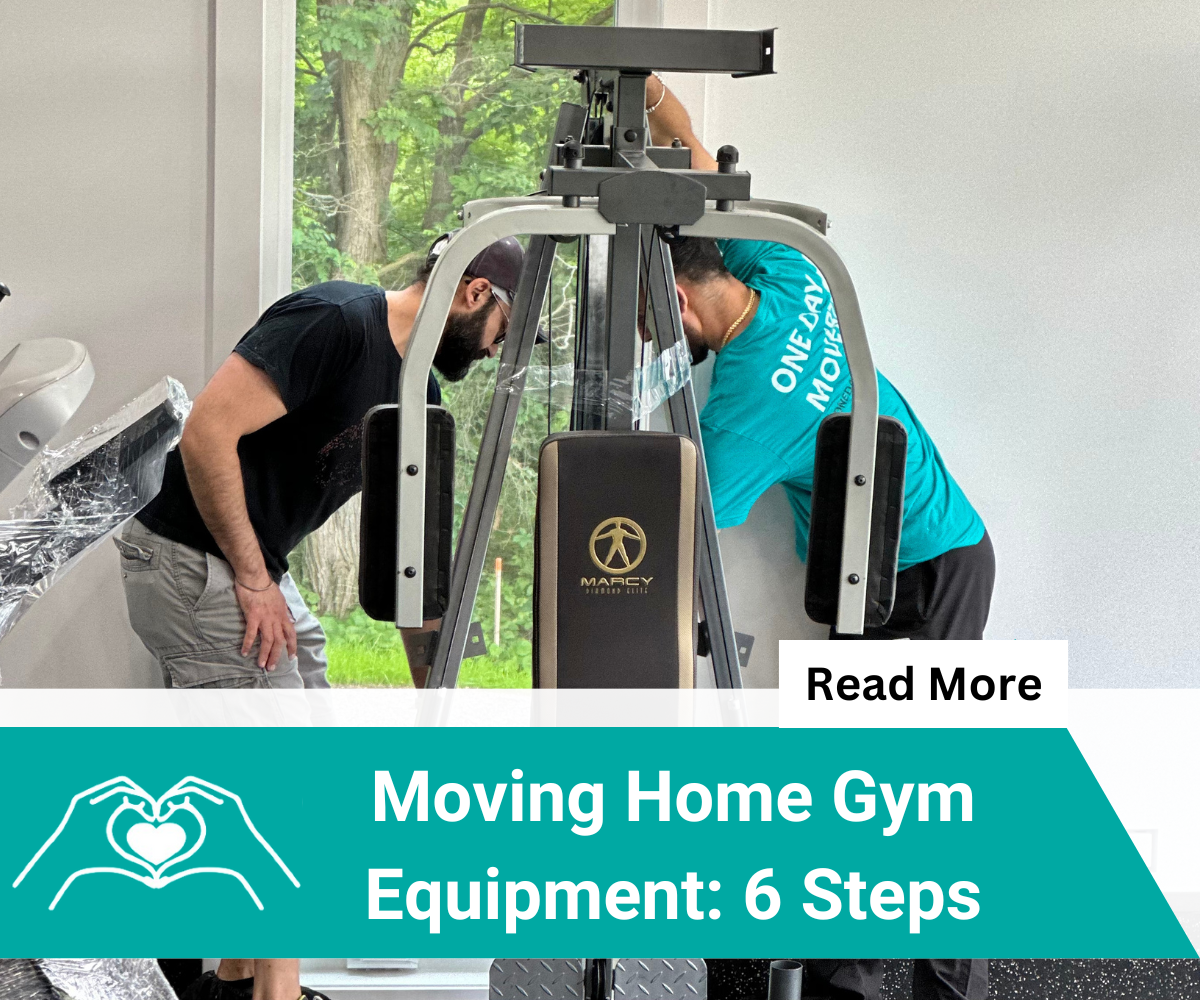Moving gym equipment can be a challenging task due to its size, weight, and complexity. Whether you’re relocating a few pieces to a new home or moving an entire home gym, it’s essential to do it safely and efficiently. This guide provides detailed tips on how to move gym equipment without causing damage to the equipment or injury to yourself.
1. Plan Ahead
Inventory Your Equipment
Start by taking an inventory of all the gym equipment you need to move. This includes weights, machines, mats, and smaller accessories. Knowing what you have helps you plan the move more efficiently and ensures nothing gets left behind.
Measure Doorways and Pathways
Measure the doorways, hallways, and any tight spaces the equipment will need to pass through. Compare these measurements with the dimensions of your equipment to ensure everything will fit. If necessary, disassemble larger pieces to make them easier to move.
Gather Packing Supplies
Get all the necessary packing supplies such as moving blankets, bubble wrap, packing tape, and sturdy boxes. These materials will help protect your equipment during the move.
2. Disassemble When Possible
Remove Attachments
For larger machines like treadmills, ellipticals, and weight benches, remove any attachments and accessories. This might include handles, foot pedals, or weight plates. Keep screws and small parts in labeled plastic bags to avoid losing them.

Fold and Lock
If your equipment can be folded, like a folding treadmill, ensure it is locked in the folded position. This prevents it from unfolding during the move.
Take Photos
Before disassembling complex machines, take photos of the equipment from multiple angles. These photos will serve as a reference when reassembling the equipment at your new location.
3. Use Proper Lifting Techniques
When moving heavy gym equipment, it’s crucial to use proper lifting techniques to avoid injury:
Lift with Your Legs
Keep your back straight and bend your knees, lifting from your legs rather than your back to prevent strain.
Get Help
Don’t tackle heavy items alone. Enlist friends or hire professional movers like One Day Movers in Toronto, who specialize in safely moving heavy items.
Plan Your Route
Ensure the path is clear of obstacles to avoid trips and falls.
Use Equipment
Employ dollies or lifting straps to facilitate easier and safer transport of heavy gym equipment.
4. Protect Your Equipment
Wrap in Moving Blankets
Wrap each piece of equipment in moving blankets to protect it from scratches and dents. Secure the blankets with packing tape or plastic wrap.
Use Bubble Wrap for Smaller Items
For smaller items like dumbbells, kettlebells, and resistance bands, use bubble wrap to prevent them from shifting and getting damaged. Place these items in sturdy boxes and fill any empty spaces with packing paper or foam.
Secure Loose Parts
Secure any loose parts, such as power cords and cables, with zip ties or tape. This prevents them from getting tangled or damaged during the move.
5. Transporting Equipment
Use a Suitable Vehicle
Ensure you have a suitable vehicle for transporting your gym equipment. A truck or van with ample space and tie-down points is ideal. Make sure the equipment is securely fastened to prevent it from moving during transit.
Load Heaviest Items First
Load the heaviest items first and place them towards the front of the vehicle. This helps distribute the weight evenly and keeps the vehicle stable during the move.
Drive Carefully
Drive slowly and carefully, especially when going over bumps or around corners. Sudden movements can cause the equipment to shift and potentially get damaged.
6. Reassembling at the New Location
Refer to Photos and Manuals
Use the photos you took during disassembly as a reference when reassembling your equipment. If you have the manuals, follow the instructions carefully to ensure everything is put together correctly.
Check for Damage
Inspect each piece of equipment for any damage that may have occurred during the move. Address any issues before using the equipment to prevent further damage or injury.
Test Equipment
Before starting your workout routine, test each piece of equipment to ensure it is functioning correctly. Make any necessary adjustments to ensure it is safe to use.
Unique Tips for Moving Specific Gym Equipment
Treadmills
- Disassemble if Possible: Remove the console and fold the treadmill if it has a folding mechanism. Use a furniture dolly to move the base.
- Secure the Belt: Use packing tape to secure the treadmill belt in place to prevent it from moving during transit.
Ellipticals
- Remove Pedals and Arms: Disassemble the elliptical by removing the pedals and arms. This makes it easier to maneuver through doorways and hallways.
- Protect the Flywheel: Wrap the flywheel in bubble wrap to protect it from damage.
Weight Benches
- Remove Attachments: Take off any attachments such as leg curl pads or preacher curls. Wrap the bench in a moving blanket and secure it with tape.
- Disassemble Frame: If the weight bench can be disassembled, take apart the frame for easier transport.
Free Weights
- Use Sturdy Boxes: Place free weights like dumbbells and kettlebells in sturdy boxes. Ensure the boxes are not too heavy to lift and fill any gaps with packing paper to prevent movement.
- Label the Boxes: Clearly label the boxes with their contents and weight to make unloading and organizing easier.
Resistance Machines
- Disassemble Cables and Pulleys: Take apart cables and pulleys to prevent them from getting tangled. Keep small parts in labeled bags.
- Protect Moving Parts: Wrap moving parts in bubble wrap and secure them with tape to prevent damage.

Hiring Professional Movers
When considering hiring professional movers for your gym equipment, it’s essential to choose a company with the right expertise:
- Research Moving Companies: Start by researching moving companies that specialize in handling gym equipment. Look for reviews and testimonials to find a reputable moving company in Toronto. Companies like One Day Movers are known for their proficiency in handling such specialized moves.
- Get Multiple Quotes: It’s wise to obtain quotes from several movers in Toronto to compare prices and services. Ensure that the company you select offers insurance to cover any potential damages during the move.
- Ask About Equipment Handling: Inquire specifically about how the company manages the transportation of gym equipment. Check that they have the necessary tools and experience. One Day Movers, for example, is equipped with the appropriate gear and expertise to ensure that your gym equipment is moved safely and efficiently.
Final Thoughts
Moving gym equipment requires careful planning, the right techniques, and appropriate tools. By following these guidelines and choosing experienced movers like One Day Movers, you can be confident that your equipment will be handled safely and efficiently. Preparing and protecting your gym equipment properly can smooth the moving process and help you resume your fitness routine quickly.
If the task seems too daunting, investing in a professional service like One Day Movers in Toronto, which has significant experience in moving gym equipment, can ensure that everything arrives in perfect condition, allowing for a hassle-free relocation.
FAQ: Moving Gym Equipment
Q1: What should I do first when planning to move gym equipment?
A1: Start by taking an inventory of all the gym equipment you need to move. Measure doorways, hallways, and any tight spaces to ensure the equipment will fit through. Gather necessary packing supplies like moving blankets, bubble wrap, and sturdy boxes.
Q2: How can I make large gym equipment easier to move?
A2: Disassemble larger machines when possible. Remove attachments such as handles and foot pedals, and fold and lock equipment like treadmills. Take photos before disassembly to help with reassembly at your new location.
Q3: What are the best practices for lifting heavy gym equipment?
A3: Use proper lifting techniques by lifting with your legs, keeping your back straight, and bending your knees. Always get help for heavy items, clear your path of obstacles, and use equipment like dollies or lifting straps to make the process safer.
Q4: How can I protect my gym equipment during the move?
A4: Wrap each piece of equipment in moving blankets and secure them with packing tape or plastic wrap. Use bubble wrap for smaller items and place them in sturdy boxes. Secure loose parts, such as power cords and cables, with zip ties or tape.
Q5: What type of vehicle is suitable for transporting gym equipment?
A5: Use a truck or van with ample space and tie-down points. Load the heaviest items first towards the front of the vehicle to evenly distribute weight and maintain stability during transit.
Q6: How should I reassemble gym equipment at the new location?
A6: Refer to the photos you took during disassembly and follow the manuals’ instructions carefully. Inspect each piece for any damage and test the equipment to ensure it functions correctly before use.
Q7: Are there any specific tips for moving treadmills?
A7: If possible, disassemble the treadmill by removing the console and folding it. Use a furniture dolly to move the base and secure the treadmill belt with packing tape to prevent it from moving during transit.
Q8: What should I do with free weights during a move?
A8: Place free weights like dumbbells and kettlebells in sturdy boxes, ensuring they are not too heavy to lift. Fill any gaps with packing paper to prevent movement and clearly label the boxes with their contents and weight.
Q9: Should I hire professional movers for my gym equipment?
A9: Hiring professional movers can be a good investment, especially if the task seems too daunting. Look for companies with expertise in handling gym equipment, like One Day Movers in Toronto. Obtain multiple quotes and ensure the movers offer insurance and have the necessary tools and experience.
Q10: How can I ensure a smooth move for my gym equipment?
A10: Plan ahead, disassemble equipment when possible, use proper lifting techniques, protect your equipment, and consider hiring professional movers. Following these guidelines will help ensure your gym equipment is moved safely and efficiently, allowing you to resume your fitness routine quickly.


